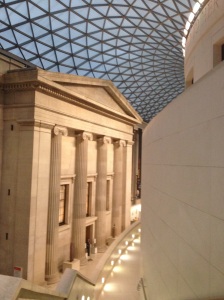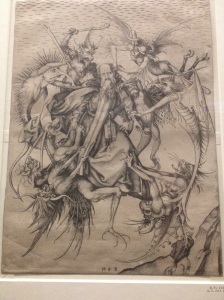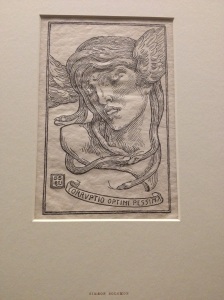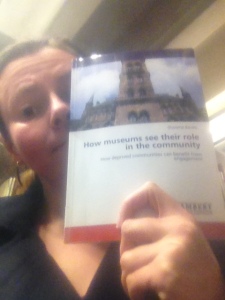Over the last year I have been working on my methods chapter and reading about amazing work that other people have done with different communities. I will leave the actual details to my chapter, but there is a underlying problem with a lot of the fieldwork accounts that are out there…they lie about what it is really like! They are perfectly documented and amazingly executed methods where participants are on time (or even turn up at all) and engage fully with the project from start to finish wi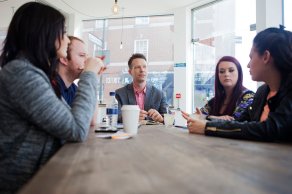 th no hitches. There is no chasing of appointments or survey responses. There is no mess, no one has better things to do than come along to an information session or a museum visit.
th no hitches. There is no chasing of appointments or survey responses. There is no mess, no one has better things to do than come along to an information session or a museum visit.
My project has been some crazy Venn diagram of when people are available, when I am available (and not at work), when the museum is open, when they don’t forget, when the children are alert and engaged, when everyone is not hungry, when it is not organised too far in the future, when it is organise with enough notice, if it isn’t raining…in fact, I am surprised that I have managed to get any families to visit the museum with me sometimes! Don’t get me wrong, I love the people and the families I work with, but they have real lives that don’t put my project at the top of their priorities list (and it shouldn’t be anyway). So when I spend an hour waiting outside the museum for a group, I don’t actually mind.
 In the long run there is a reason for an absence and it’s not because they didn’t want to come.
In the long run there is a reason for an absence and it’s not because they didn’t want to come.
Then there is the methods. It’s great asking people to take photos with you. In the past I have used disposable cameras and taken them away to be developed. This has it’s own problems of children not knowing how they work (this was hilarious the first time – “where can I see the photo when I am taking it?” and “How can I delete ones I don’t like?”), fingers over the view finders and over winding by the more zealous participants. It all leads to no data. I was not (and am still not) in a position to buy lovely digital cameras to give out to families. So I asked my families to use their phones and share pictures with me. Perfect! They took loads going around the museum of each other, of things they liked or made them laugh…but the actual act of sharing those gets more complicated. You get a “yeah, sure” and one photo or two. This then makes the next step of discussing those photos more complicated because there are no photos, and the getting together to talk about these, well see Venn diagram problem.
The above issues all happen after you have found a group to work with. They are out there, but sometimes the gatekeepers can be tricky. However, if you go and have a chat and a cuppa about your project and how you can help them it all turns out lovely. People genuinely want to help!
I am halfway through my fieldwork and originally I had planned it to be one academic year with one group of people. At the end of the summer term the group fell apart for a number of reasons, and I lost regular contact quite quickly. I wondered what I was going to do as I wasn’t finished and it seemed a bit of an imposition to ask for further meetings – they had other things on their minds. I potentially have a new group now. So a contrast maybe, but also a new start with some of the lessons learnt from last year. I also have the assurance that this crazy process is “normal”. So if it is normal, please please write about it! Let’s not let other researchers and students feel like they are failing because the course of research does not run smooth.

